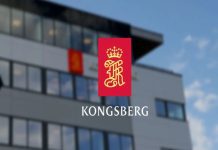
February witnessed a resurgence in global manufacturing activity, with production marking its second consecutive month of expansion, fueled by a return to growth in new order intakes.
The latest data from the JP Morgan Global Manufacturing PMI indicates a positive outlook, with optimism about the year ahead remaining close to the previous month’s nine-month high.
The JP Morgan Global Manufacturing PMI – a collaborative effort between JP Morgan, S&P Global, ISM, and IFPSM – rose to 50.3 in February from 50.0 in January, marking its first reading above the neutral 50.0 mark in 18 months.
Three out of the five PMI subindices, including new orders, output, and stocks of purchases, signalled growth.
While the expansion in output remained moderate, it was the second-fastest in the past 20 months, with all three sub-sectors surveyed experiencing growth.
Notable increases in manufacturing production were observed in China, the US, India, and Brazil, while some regions, including the euro area, Japan, and the UK, reported declines.
The growth in global manufacturing production was supported by increased new business intakes and efforts to address backlogs of work.
Despite a marginal increase in total new orders, the downturn in new export orders eased to its weakest level since June 2022, reflecting a positive trend in international trade volumes.
In the labour market, although further job losses were recorded, the reduction in staff headcounts was the least marked since September.
Notably, some countries, such as the US, Brazil, Mexico, and Russia, witnessed job growth, indicating positive momentum.
Bennett Parrish, a global economist at JP Morgan, noted, “The February PMI survey saw the rebound in global manufacturing gather pace,” highlighting improvements in output and new orders.
Parrish also pointed out that supply chain stresses appeared to have eased somewhat, with encouraging signs in new export business and employment.
Looking ahead, the outlook for the global manufacturing sector remains positive, with optimism about the coming year remaining robust.
The report also highlighted improvements in vendor lead times in certain countries, suggesting potential alleviation of supply chain pressures.


















